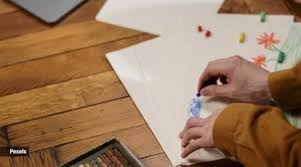Art therapy, once seen as an alternative form of treatment, is now gaining widespread recognition for its positive impact on mental health. This article explores the growing popularity of art therapy, its various applications, and the therapeutic benefits it offers to individuals struggling with mental health issues.
Understanding Art Therapy
What is Art Therapy?
Art therapy is a form of expressive therapy that utilizes the creative process of making art to improve and enhance the physical, mental, and emotional well-being of individuals of all ages. It is guided by qualified art therapists who help clients explore their feelings, reconcile emotional conflicts, and develop self-awareness through artistic expression.
The Therapeutic Process
In art therapy sessions, individuals are encouraged to engage in various artistic activities, such as drawing, painting, sculpting, and collage-making, to externalize their thoughts and emotions in a safe and supportive environment. The creative process itself becomes a form of communication, allowing clients to express themselves non-verbally and access deeper levels of self-awareness.
Applications of Art Therapy
Mental Health Treatment
Art therapy is widely used as a complementary treatment approach for individuals experiencing a range of mental health issues, including anxiety, depression, trauma, and substance abuse disorders. Through artistic expression, clients can gain insight into their emotions, develop coping skills, and build resilience in the face of challenges.
Stress Reduction
Engaging in creative activities can be inherently calming and soothing, helping individuals to reduce stress, unwind, and relax. Art therapy provides a therapeutic outlet for processing emotions, relieving tension, and promoting a sense of inner peace and well-being.
Self-Exploration and Personal Growth
Art therapy offers a unique opportunity for self-exploration and personal growth, allowing individuals to explore their identities, values, and life experiences through the creation of art. It fosters self-reflection, self-discovery, and a deeper understanding of one’s inner world.
The Benefits of Art Therapy
Emotional Expression
Art therapy provides a safe and non-judgmental space for individuals to express their thoughts, feelings, and experiences that may be difficult to articulate verbally. Through art-making, clients can externalize their emotions, process difficult memories, and gain a sense of catharsis and relief.
Empowerment and Agency
Engaging in the creative process empowers individuals to take an active role in their healing journey. Art therapy encourages autonomy, self-expression, and personal agency, giving clients a sense of control over their narratives and fostering a positive sense of self-efficacy.
Social Connection
Art therapy can also facilitate social connection and community-building, as individuals come together to create and share their artwork in group settings. It promotes empathy, mutual support, and a sense of belonging, fostering meaningful connections with others who share similar experiences.
Embracing the Healing Power of Art
As art therapy continues to gain recognition as a valuable therapeutic modality, more individuals are discovering its transformative benefits for mental health and well-being. By harnessing the creative process, art therapy offers a powerful tool for self-expression, healing, and personal growth.




